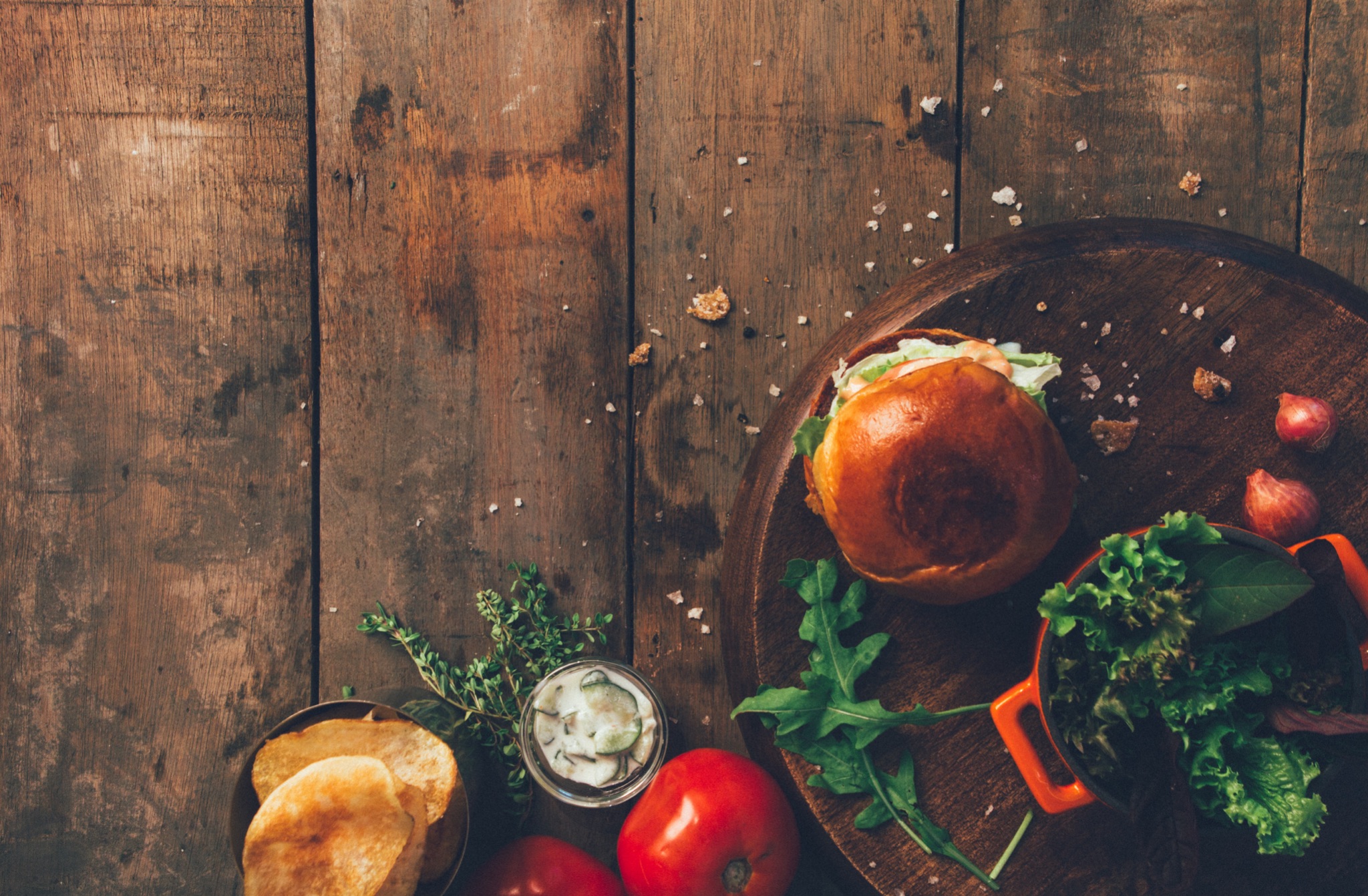[su_note note_color=”#ffe3e6″]This post contains affiliate links. Affiliate disclosure: As an Amazon Associate, we may earn commissions from qualifying purchases from Amazon.com and other Amazon websites.[/su_note]
An infographic by the USDA’s Let’s Talk Trash project reveals that Americans throw away over $372 worth of food every year, or about 90 billion pounds of food that could have been consumed but wasn’t. This amounts to around half a pound of wasted weight per person each day, or 387 billion calories every day. Greens account for roughly 19% of all wasted produce. The Natural Resources Defense Council (NRDC) found that 8 percent of food is lost or wasted in the institutional and food service sector. Examples of such places would include classrooms and hospitals. Based on these numbers, it’s clear that food waste is a serious issue, and action is required to decrease the amount of food wasted on a daily basis.
Perhaps you’re wondering what role schools can play in the fight against food waste. The amount of food that is wasted at schools can be decreased, recovered, and reused. Food waste can be minimized by implementing better planning, preparation, and storage practices; good, unused food can be recovered and donated to those in need; and food scraps can be recycled into animal feed, compost, and even energy.
What Happens to All the Food Waste?
It’s probably going to end up in the trash dump. However, most food waste still goes to landfills, even though some schools and even some municipalities have composting programs. It’s a sluggish decomposition process there. Additional greenhouse gases that contribute to climate change are released when food waste is sent to a landfill.
Garden-Grown Learning
Students can work together to find real, doable solutions to the problem of food waste after they have a basic understanding of food waste essay and the scope of the issue. Changing how we feel about eating is likely to be at the top of the list in terms of what has to be done to get us excited about making healthier choices. Some suggestions for how gardening might help teach pupils the value of food and inspire them to save it are included below.
Any child’s excitement at harvesting his or her first carrot from the garden will outweigh any disappointment at the carrot’s crookedness or fork. This is the first time a kid gets a taste of what “real” food is like.
Children who cultivate their own veggies are more likely to consume them (and to experiment with other varieties), both in the garden and in other settings. Planting, weeding, watering, and harvesting veggies from a garden is hard work, but the rewards are worth it. When something becomes valuable, such as fresh produce, children (and adults) are less prone to waste it. When students work in a school garden, they are reminded that someone else’s hard work is appreciated, even if they didn’t grow the food themselves. Cutting away the faulty part of the fruit leaves the rest of the fruit unblemished and delicious, which can help reverse the negative connotation associated with an imperfect product.
All of these things should act as constant reminders that food is just as valuable (if not more so) than any precious stone. Our whole survival depends on it. The question then becomes how to properly appreciate it. by not squandering it.
Changing our mindset is the first step toward bettering our actions. You can put this fresh viewpoint into practice by doing the following:
Get a Composting Area Ready
Compost is considered “black gold” by savvy school gardeners. By breaking down over time, organic matter including garden trimmings, food scraps, leaves, and more can be transformed into a nutrient-rich black substance that improves soil quality as compost. The key to a fruitful garden is rich, fertile soil.
In some areas, residents can arrange for their food scraps to be collected by expert composters. Create a school composting program if one does not already exist in your area. When composted, plant nutrients that would have been sent to the landfill can instead be used in the garden at no cost. The amount of garbage sent to landfills is cut down, as is the amount of greenhouse gases released by them. Everyone benefits. Less garbage sent to the dump means less money out of pocket for garbage collection, more nutrients for garden plants from compost, and more educational opportunities for students. Read this piece I wrote about composting. Instructions on how to initiate a composting program at your school are provided in the next section.
Create Share Tables
The United States Department of Agriculture (USDA) defines “Share Tables” as locations where kids can put back whole food or beverage items they don’t want to eat, provided that doing so is in accordance with local and state health and food safety laws. While these stations are usually located near the serving area of the lunchroom, they can be placed anywhere the food service crew is present.
At “Share Tables,” kids are welcome to assist themselves with an extra serving of whatever is being served, without having to pay for it. Items that pupils no longer need or want are placed on a “sharing table” for their classmates to take. To avoid suspicions of tampering, the food on the communal table should be plainly recognizable. Milk cartons bagged carrots, and whole fruits like bananas, apples, and oranges are common examples of packaged goods used on share tables.
Any leftovers from the lunch service or the after-school snack program can be eaten and recouped during the next meal service. Donations can also be made to charitable organizations like food banks, homeless shelters, and others that work to improve the lives of those in need. All necessary safety protocols and temperature controls must be in place before any potentially hazardous meals, such as milk, can be placed on the share table. Here are a few suggestions for keeping food safe at Share Tables:
- Follow health and food safety rules from the federal, state, and local governments.
- Set clear rules about what food parts can and can’t be shared or used in a later meal that will be reimbursed.
- If local and state laws allow people to share things that need to be cooled, set up strict food safety rules to keep people from getting sick.
- Always keep an eye on the share table to make sure food safety rules are being followed.
- Children and families should know about the share table.
Food Recovery Hierarchy
The Food Recovery Hierarchy is a helpful tool for educational institutions to use when deciding what actions to take. Methods for decreasing food waste are presented in an inverted pyramid, with the most effective strategies at the top and the least effective strategies at the bottom.
Managing waste at its origin by generating only what is needed is the first step in the food recovery hierarchy. Step two is providing sustenance for those in need, whether through food drives or school share tables. Animal feed is the third step, followed by industrial applications in step four. Composting unwanted food is the fifth step, and incineration or garbage disposal is the last two. Last but not least, throwing away edibles in the trash is the least ideal option because it usually ends up in a landfill where they will rot. Methane gas released by decomposing food in landfills can have far-reaching ecological consequences.
Nutrition Program Strategy
Food loss may be minimized at every stage of school lunch service, from menu planning to dish disposal. Menu planners can take into account students’ preferences and feedback throughout the planning phase, removing unpopular items and possibly replacing them with alternatives. Make sure you’re not buying more than you need during the shopping process to avoid going hungry. If there is an abundance of a certain item in the warehouse, no more of that item should be ordered until it is actually used up. Keep food at safe temperatures during the receiving process so that it doesn’t go to waste.
Food should be stored properly to help maintain its freshness and quality throughout the storing process. Food waste can be reduced by monitoring the temperature of your refrigerator, freezer, and other food storage areas. It’s important to teach food service workers proper knife techniques early on to reduce perishable produce waste.
Train kitchen workers to watch the food they’re preparing. So nothing gets burned or students get the food they won’t eat and throw away. Last, schools can use offer versus serve to give kids more control over their food intake.
Active managerial control, food safety, monitoring, training, and supervision can help reduce waste. Learning from service is another important aspect of planning.
Salad Bars
Salad bars are a fantastic way to give students some culinary leeway during lunchtime. Less food goes to waste when students may select the items they intend to consume. Salad bars offer a wider range of foods, so kids can choose what they want and are more likely to eat what they take.
One strategy for reducing waste at salad bars is to use smaller pan sizes. This not only frees up space for more salad fixings but also helps keep prices down. Salad bars can also be stocked with cost-effective USDA Foods. Fresh produce from DOD Fresh/FAVORS can add diversity to your salad bar and lower the price. Having a salad bar is one way for schools to reduce their plastic waste. The money saved on containers may be used to buy more meals, and there will be less trash to deal with in the end because of this.
Implementing Offer vs. Serve Model
Schools may contribute to the fight against food waste in many different ways. To give kids more agency over their eating habits, schools can adopt the “offer versus serve” model. Offer rather than serve can help schools save money by reducing waste, encouraging students to eat more fruits and vegetables, and qualifying more meals for reimbursement. Students are less likely to waste food when they have more say over what they consume. Schools can benefit greatly from the many tools provided by the USDA’s Team Nutrition Initiative, which range from posters to tip sheets.
Conducting Food Waste Audits
To find out how much food is being wasted in their school or district, schools can perform a school waste audit. Guide to Conducting a Student Food Waste Audit is a resource created by the United States Department of Agriculture (USDA), the Environmental Protection Agency (EPA), and the University of Arkansas. This document serves as a guide for educational institutions to follow in order to do a thorough audit of their food waste practices.
The food waste audit can be tailored to the needs and resources of individual schools, allowing for both comprehensive and simplified approaches. Conducting a food waste audit is a good approach to figuring out what kinds of chunks are being wasted. As previously indicated, it can be as straightforward or intricate as needed to ascertain the extent to which food is being wasted. The food service director might simply count the amount of produce and other perishables that are being thrown away as an example of a very basic food waste audit.
Implementing Smarter Lunchroom Techniques
The Smarter Lunchrooms Movement was established to encourage students to make better nutritional decisions when shopping for and preparing their lunches at school. Several measures have been shown to be effective in reducing food waste in school cafeterias and increasing the proportion of kids who eat healthy meals. Schools can use the Smarter Lunchrooms Scorecard to evaluate their current practices and identify more opportunities for improvement. Cutting up entire fruits and vegetables, increasing meal quality, and scheduling recess before lunch are just a few examples of better lunchroom methods that cut down on food waste.
Fruits and vegetables are more accessible and more appetizing to children when they are cut into bite-sized pieces. In addition, you can lessen the amount of produce you throw away by teaching yourself and your staff safe and efficient knife techniques. Consumption of fruits and vegetables is increased by 70 percent when they are offered pre-sliced. Improving the caliber of the food served is an obvious recommendation. A higher proportion of students will eat what is served and express satisfaction with the food when it is of higher quality.
Student food waste can be greatly reduced by scheduling recess immediately before lunch. When students are given the opportunity to play during recess before lunch, they are less likely to waste their mealtime worrying about missing out on socializing with friends. Researchers have also found that people tend to eat more after engaging in physical activity. One study found that when recess is held before lunch, students are more likely to eat their fruits and vegetables (54 percent vs. 40 percent) and waste less food (40 percent vs. 60 percent). Having some time for play before lunch can help keep the mood peaceful, too.
Seating Period
Students value the amount of time they have to eat in a seated position. A 20-minute lunch slot is an insufficient time for pupils to sit down and eat, according to research. The best practice is actually a 30-minute lunch break, but a change from 20 to 25 minutes resulted in a 13% reduction in waste. When given extra time to eat, kids are less likely to feel rushed and end up eating more. Our culture places a high value on eating and socializing together, so allowing students time for breaks during mealtimes is crucial.
A district’s schools were observed for how long students spent in their seats. There is one secondary school, one intermediate school, and three primary schools within the district. Students in middle school and high school have more control over their sitting time than their elementary school counterparts because they decide when they get up to empty their trays.
Elementary school children are required to stand up and throw away their trays at predetermined times, regardless of whether or not they have finished eating. Students in elementary schools had, on average, only 18 minutes to eat lunch, with the younger grades typically having even less time. Since the lunch line can get long, especially at the beginning of the school year or for younger students, it may be necessary to extend the lunch period.
Students Engagement
Students are more likely to eat what is provided to them if they have some say in the matter. The result may be less wasted food and more pupils consuming more nutritious fare. A few examples of student participation in school food programs are listed below:
- Taste tests among students.
- Allow students to vote on new menu items so you can determine whether they were appreciated or not.
- Hold a competition for the best menu item titles.
- Cooking demonstrations or classes can interest pupils.
- Inform your consumers (students) about the food options and dietary restrictions.
- Create groups of kids called food recovery teams to assist in educating other students about which foods can be composted and which can be donated. These student groups can assist with drop-offs for donations and collections as well.
Schools of all levels are encouraged to participate in the US Food Waste Challenge’s efforts to minimize, reclaim, and recycle food waste. Every step of the procedure in the flow of school food service is vulnerable to waste (shown below in a graphic adapted from the Center of Excellence for Food Safety Research in Child Nutrition Programs). Staff in the food service industry can keep tabs on the entire procedure, and waste-reduction measures can be categorized as either “front of the house” (where the customer is) or “back of the house” (where the food is prepared). Training staff to deal with issues might benefit greatly from lessons learned along the road.
Learning about a problem is the first step in solving it. Due to our hectic lifestyles, people today value efficiency over sustainability. Get students to come up with strategies to inform their families and communities about the need of reducing food waste, and rally support for a shared effort to do so!






